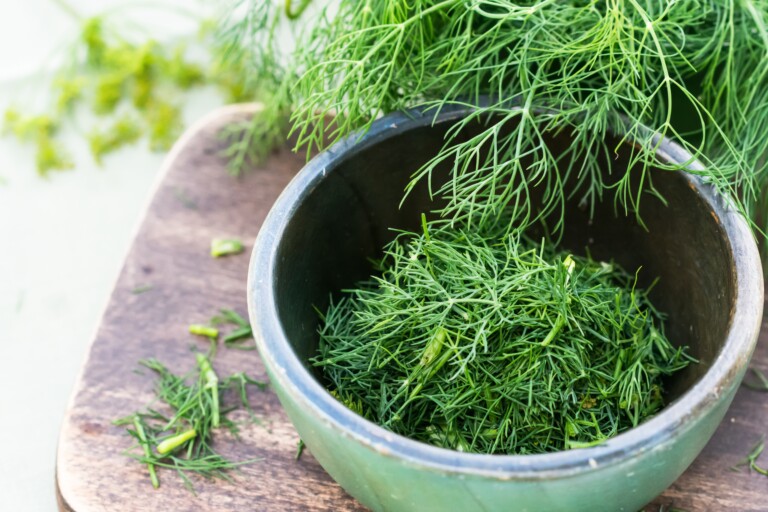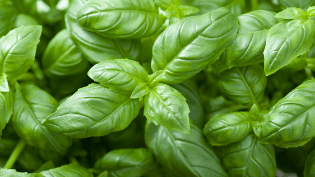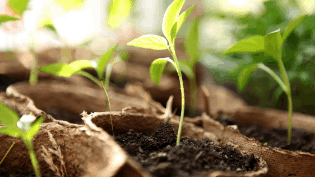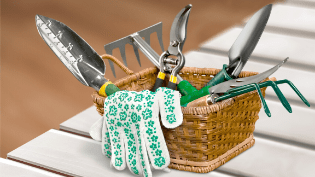Grow Parsley From Seeds
Parsley is a versatile herb that adds flavor and nutrition to a wide range of dishes, from soups and stews to salads and sandwiches. While parsley is often readily available at grocery stores, growing it from seeds indoors is a simple and rewarding way to ensure a year-round supply of fresh, flavorful herbs.
In this article, we will discuss the benefits of growing parsley from seeds indoors, the equipment and materials needed, and the step-by-step process of planting and caring for parsley seedlings.
We will also provide tips on harvesting and using parsley in cooking and other applications. Whether you’re an experienced gardener or a novice, growing parsley from seeds indoors is an easy and enjoyable way to add fresh herbs to your diet and enhance your culinary creations.
Benefits of Growing Parsley Indoors
Growing parsley indoors has several advantages over outdoor gardening, especially in a climate that can be unpredictable. By growing parsley in pots, you can control the growing conditions more easily, such as temperature, lighting, and moisture, which can lead to healthier plants and better yields.
Indoor gardening also allows you to have fresh herbs year-round, regardless of the season and can save space in smaller homes or flats. In addition, growing parsley indoors is convenient, as you can grow herbs in pots in your kitchen, living room, or other indoor spaces.
This makes it easy to access the herbs when you need them, without having to venture outside in inclement weather or search through the grocery store for fresh herbs. By controlling the growing environment, you can help your parsley plants grow more robustly and produce higher yields of fresh, flavorful herbs.
With a little effort, you can have a thriving indoor herb garden that will enhance your culinary creations and add a touch of green to your living space.
Choosing the Right Seeds and Equipment
To grow parsley in pots indoors, it’s important to choose the right seeds and equipment. When selecting parsley seeds, you can choose between curly or flat-leaf varieties, depending on your preference. For the best results, it’s important to choose high-quality seeds from reputable suppliers, as these are more likely to germinate and produce healthy plants.
In addition to the seeds, you will need the right equipment to grow parsley in pots. This includes pots or containers, potting soil, fertilizer, and lighting. When choosing pots, it’s important to select containers that are deep enough to accommodate the roots of the parsley plant and provide adequate drainage. You can purchase pots from garden centers, online retailers, or even second-hand stores.
Alternatively, you can use everyday household items such as old plastic containers, yogurt pots, or even eggshells to save money and reduce waste. Just make sure to poke holes in the bottom for drainage.
For the potting soil, choose a well-draining, nutrient-rich mix that is specifically designed for herbs. You can purchase potting soil from garden centers or make your own by mixing equal parts of perlite, peat moss, and vermiculite. For fertilizer, choose a balanced, water-soluble formula that is specifically formulated for herbs. You can also use natural fertilizers such as compost, worm castings, or seaweed extract to keep your parsley plants healthy and productive.
Lighting is also important when growing parsley indoors, as the herb requires plenty of bright, indirect light to thrive. If you don’t have access to natural light, you can use artificial lighting such as LED grow lights to provide the necessary light for your plants. LED grow lights are energy-efficient and come in a range of sizes and types to suit different growing spaces and budgets.
In summary, choosing the right seeds and equipment is essential for successfully growing parsley in pots indoors. By selecting high-quality seeds and using well-draining potting soil, balanced fertilizer, and adequate lighting, you can grow healthy and productive parsley plants that will enhance your cooking and add a touch of green to your living space.
Don’t be afraid to get creative with your pots and containers – by reusing household items or shopping for bargains, you can save money while still enjoying the benefits of fresh herbs at home.
Preparing the Seeds and Soil
Once you have your parsley seeds and equipment, it’s important to prepare them properly before planting. Preparing the seeds and soil correctly will help ensure that your parsley plants germinate and grow into healthy seedlings. Here are some steps you can follow:
- Soak the parsley seeds: Soaking parsley seeds in water overnight can help soften the seed coat and speed up germination. Simply place the seeds in a bowl or jar and cover them with water. Leave them to soak for 8-12 hours, or overnight.
- Prepare the potting soil: While the parsley seeds are soaking, you can prepare the potting soil by mixing it with fertilizer or compost. Use a high-quality, well-draining potting mix that is specifically designed for herbs. You can purchase potting soil from garden centers or make your own by mixing equal parts of perlite, peat moss, and vermiculite. To this mix, add a slow-release fertilizer that is balanced and water-soluble. This will provide the necessary nutrients for the parsley plants to grow and thrive.
- Fill the pots: Fill the pots or containers with the potting soil mixture, leaving about an inch of space at the top. This space will allow room for watering without overflowing.
- Sow the parsley seeds: Sprinkle the parsley seeds on top of the soil, spacing them about 1 inch apart. Cover the seeds with a thin layer of soil, about 1/8 inch deep. This will help to protect the seeds and keep them moist until they germinate.
- Water the pots: Water the pots gently, being careful not to disturb the seeds. Use a watering can or spray bottle to moisten the soil without creating puddles or waterlogging the soil. Keep the soil moist but not soggy until the seeds germinate.
- Provide the right growing conditions: Once the seeds have germinated, you will need to provide the right growing conditions to help them grow into healthy seedlings.
- This includes providing bright, indirect light, and keeping the soil moist but not waterlogged. You can use a spray bottle or misting wand to water the plants without disturbing the soil or seedlings.
Preparing the seeds and soil correctly is an essential step in successfully growing parsley indoors. By soaking the seeds, preparing the potting soil, and sowing the seeds carefully, you can give your parsley plants the best chance to germinate and grow into healthy seedlings. Remember to keep the soil moist and provide the right growing conditions to help your parsley plants thrive.
Caring for Parsley Seedlings
Once the parsley seeds have germinated, they will need proper care to grow into healthy seedlings. Keep the pots in a warm, bright location, such as a south-facing window, and make sure the soil stays moist but not waterlogged. Fertilize the seedlings with a balanced fertilizer every two weeks, following the instructions on the package.
Watch out for common problems, such as pests and diseases, and treat them promptly if they occur. As the parsley seedlings grow, thin them out so that there is only one plant per pot. This will give each plant enough space to grow and prevent competition for resources.
Transplanting Parsley Seedlings
Once the parsley seedlings have grown to about 3-4 inches in height and have a few sets of leaves, it’s time to transplant them into larger containers or outdoor garden beds. Choose containers that are at least 8 inches in diameter and have drainage holes at the bottom.
Fill the containers with potting soil, leaving about an inch of space at the top. Gently remove the parsley seedlings from their original pots, being careful not to damage the roots, and place them in the new containers. Water the seedlings immediately after transplanting and keep them in a warm, bright location for a few days to help them adjust to their new surroundings.
Harvesting Parsley
Once your parsley plants are established and growing well, you can start harvesting the leaves for use in cooking and other applications. To harvest parsley leaves, use a sharp pair of scissors or a knife to cut off the outermost leaves, leaving the center intact.
This will encourage the plant to produce new growth and prolong the harvest. Avoid harvesting more than a third of the plant at a time, as this can stress the plant and reduce its productivity. You can use parsley leaves fresh, dried, or frozen, depending on your preference.
Parsley leaves can be used in a variety of dishes, including soups, stews, salads, and sauces.
Growing parsley from seeds indoors is an easy and rewarding way to ensure a year-round supply of fresh herbs. By following the steps outlined in this article, you can successfully grow parsley from seeds indoors and enjoy its flavor and nutrition in your favourite dishes.
Remember to choose high-quality seeds and equipment, prepare the soil and seeds properly, and provide the seedlings with proper care and attention. With a little patience and effort, you can have a thriving indoor herb garden that will enhance your culinary creations and add a touch of green to your living space.





